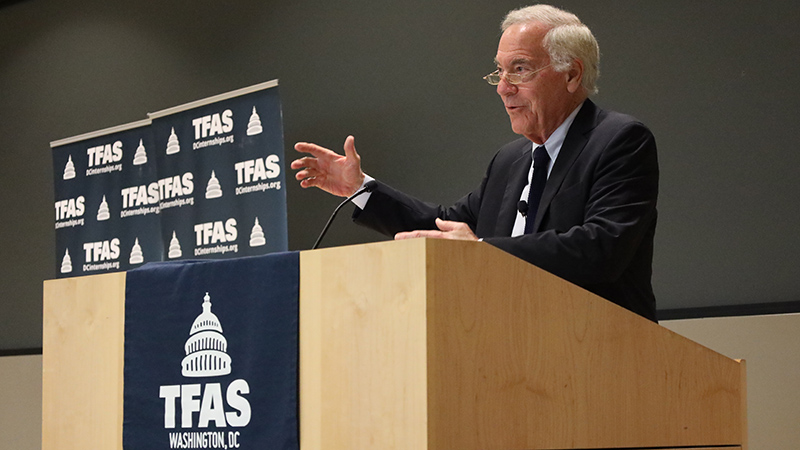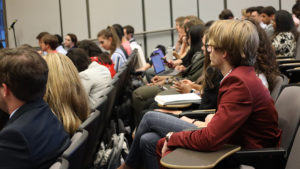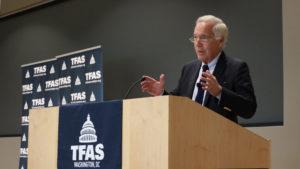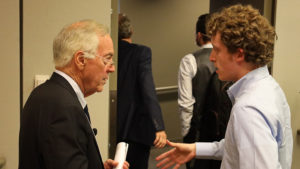
On June 28, The Fund for American Studies (TFAS) hosted the annual Dobriansky Lecture on Political Economy in honor of Professor Lev Dobriansky. Dr. Steve Hanke, a professor of applied economics and founder and co-director of the Institute for Applied Economics, Global Health, and the Study of Business Enterprise at Johns Hopkins University, served as the keynote speaker. Hanke enlightened students about the real causes of inflation in the past and the present, and he provided a snapshot of what the future of inflation could look like in the U.S.

Before Ambassador Paula Dobriansky introduced Dr. Hanke, she shared how dedicated her father Lev was to TFAS. She expressed how thankful her entire family is for having this lecture in honor of him. Lev Dobriansky was not only a beloved TFAS professor, but he was also a founding director of the first TFAS programs in Washington. He was “dedicated to the very mission of The Fund for American Studies,” she said.
Hanke gave students a brief overview of what hyperinflation was like decades ago in different countries around the world. He informed students about the United States’ current inflation rate, which is the highest it has been in 40 years at 8.6 percent. He highlighted how critical it is to find the causes of inflation and why so many economists did not catch on to the cause of the current inflation soon enough.

Hanke believes that economists looked for the cause of inflation in all the wrong places. Many assume that today’s inflation is caused by Putin’s actions and supply chain issues. However, Hanke argues that inflation is always created by the central bank, and inflations are always local.
He encouraged students to think critically about these issues because someday their generation will likely oversee the same issues and may be able to successfully prevent future inflations.
“I think what we’re going to see is a continuation of inflation because no matter what the Fed does, we have this excess money that’s in the tub – and still draining out – and going into inflation overflow,” Hanke said.

In other words, Hanke emphasized that the Federal Reserve has significantly increased the money supply. Since 2020, government expenditures have grown rapidly, and the deficit has increased at an alarming rate.
Based on his calculations, Hanke predicts a seven percent inflation rate by the end of this year. He also expects that inflation will not dip any lower than five or six percent in 2023.
Hanke’s address truly sparked students’ curiosity on this vital topic. After his closing remarks, students eagerly lined up to ask more in-depth questions.
Watch the full lecture below:

